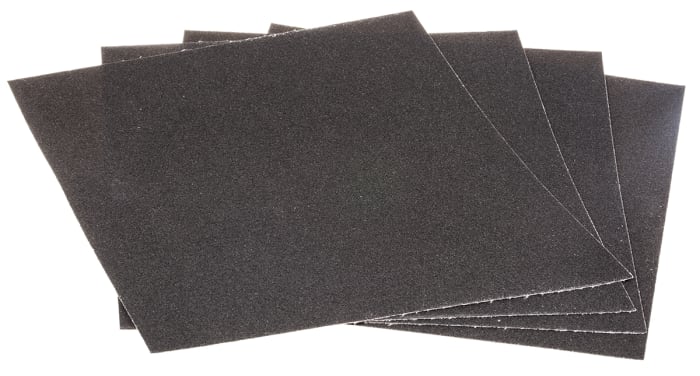Emery paper, also known as emery cloth or sandpaper, is an abrasive material used for sanding and smoothing surfaces. It is made by bonding abrasive grains, typically aluminum oxide or silicon carbide, to a paper or cloth backing. Emery paper comes in various sizes and types to suit different applications. Here are some common characteristics and variations of emery paper:
Sizes:
- Sheet Size: Emery paper is often sold in sheets of various dimensions, such as 9" x 11" (22.86 cm x 27.94 cm), 8.5" x 11" (21.59 cm x 27.94 cm), or other standard sizes. These sheets can be cut into smaller pieces as needed for the task at hand.
- Roll Size: Emery cloth is also available in rolls, which provide a continuous length of abrasive material. Roll sizes can vary, with typical widths ranging from 1" (2.54 cm) to several inches, and lengths varying from a few feet to many yards.
Types:
- Grit Size: Emery paper is categorized by its grit size, which refers to the coarseness or fineness of the abrasive particles. Lower grit numbers indicate coarser abrasives, while higher numbers indicate finer abrasives. Common grit sizes for emery paper range from around 40 grit (coarse) to 1200 grit (very fine) or higher.
- Backing Material: Emery paper can have a paper or cloth backing. Paper-backed emery paper is typically more flexible and suitable for lighter tasks, while cloth-backed emery cloth offers more durability and is often used for heavy-duty applications.
- Waterproof: Some types of emery paper are waterproof or have a waterproof backing. These are designed for wet sanding applications, such as automotive refinishing or working on surfaces that require water lubrication for better results.
- Adhesive Backing: Certain emery papers have adhesive backing, commonly known as "sticky-back" or "PSA" (Pressure Sensitive Adhesive). This allows the paper to be easily adhered to a sanding block or other sanding tools for convenience and better control.
Each type and grit size of emery paper serves different purposes and is suitable for specific applications. It's important to select the appropriate grit size and backing material based on the material being sanded, the level of surface finish desired, and the task requirements.
Please note that specific product availability and variations may vary depending on manufacturers and suppliers.
Emery paper or sandpaper comes in a wide range of grit sizes, each serving a specific purpose in sanding and smoothing applications. Here is an overview of common grit sizes available:
Coarse Grits:
- 40 to 60 grit: Very coarse grit used for heavy material removal, such as stripping paint or shaping surfaces.
- 80 to 100 grit: Coarse grit suitable for initial rough sanding and leveling uneven surfaces.
Medium Grits:
- 120 to 150 grit: Medium grit for general-purpose sanding, smoothing surfaces, and preparing for finer grits.
- 180 to 220 grit: Fine-medium grit for intermediate sanding and surface preparation.
Fine Grits:
- 240 to 320 grit: Fine grit for achieving a smooth surface, removing scratches from previous grits, and preparing for finishing.
- 360 to 600 grit: Very fine grit for achieving a smoother finish and preparing surfaces for paint, varnish, or final coatings.
- 800 to 1200 grit: Extra fine grit used for fine sanding, polishing, and achieving a high-quality, smooth finish.
Super Fine Grits:
- 1500 to 2000 grit: Super fine grit for ultra-smooth sanding, polishing, and refining surfaces.
- 2500 to 3000 grit: Extra super fine grit used for very fine sanding, polishing, and obtaining a mirror-like finish.
Ultra Fine Grits:
- 4000 to 8000 grit: Ultra fine grits used for very fine polishing, removing micro scratches, and achieving a high gloss finish.
- 10000 to 12000 grit: Ultra fine grits for achieving an extremely high level of polish, often used in specialty applications like jewelry making or optical polishing.
Please note that the specific grit sizes available may vary among manufacturers and suppliers. It's recommended to consider the requirements of your project and consult product labels or specifications to determine the appropriate grit size for your sanding needs.
No reviews found


